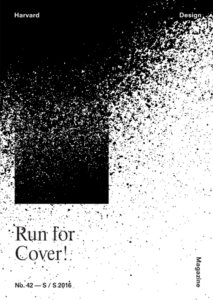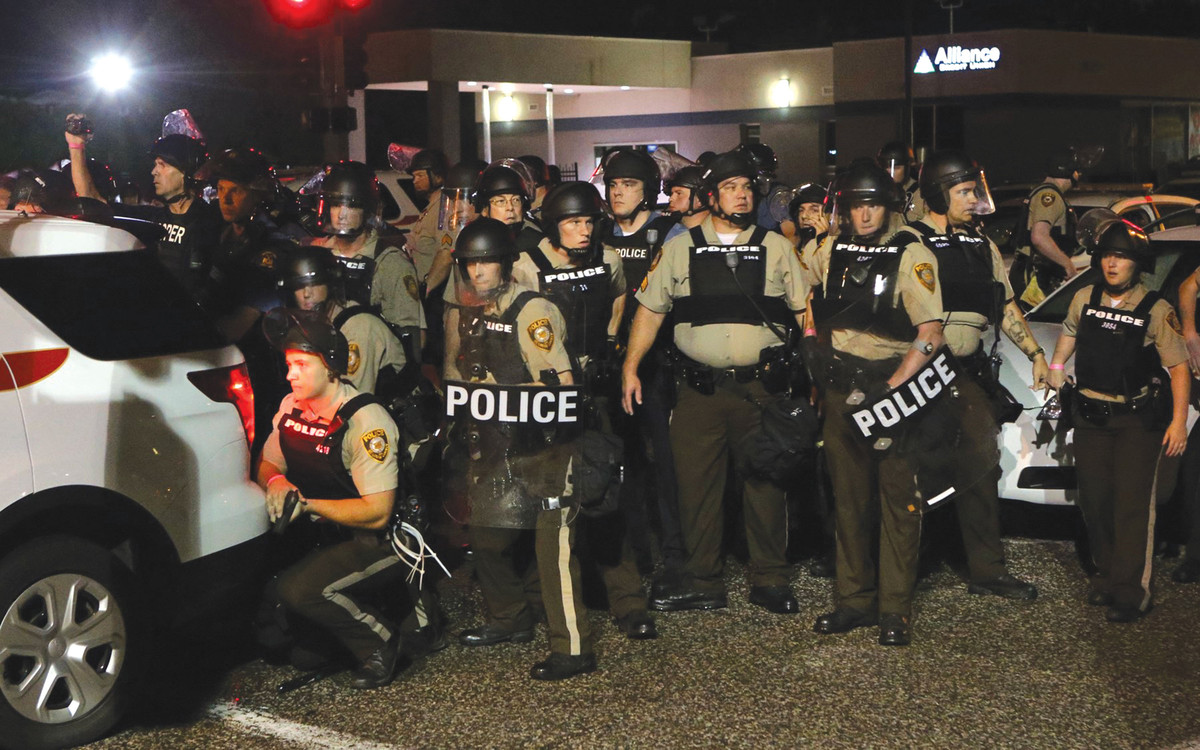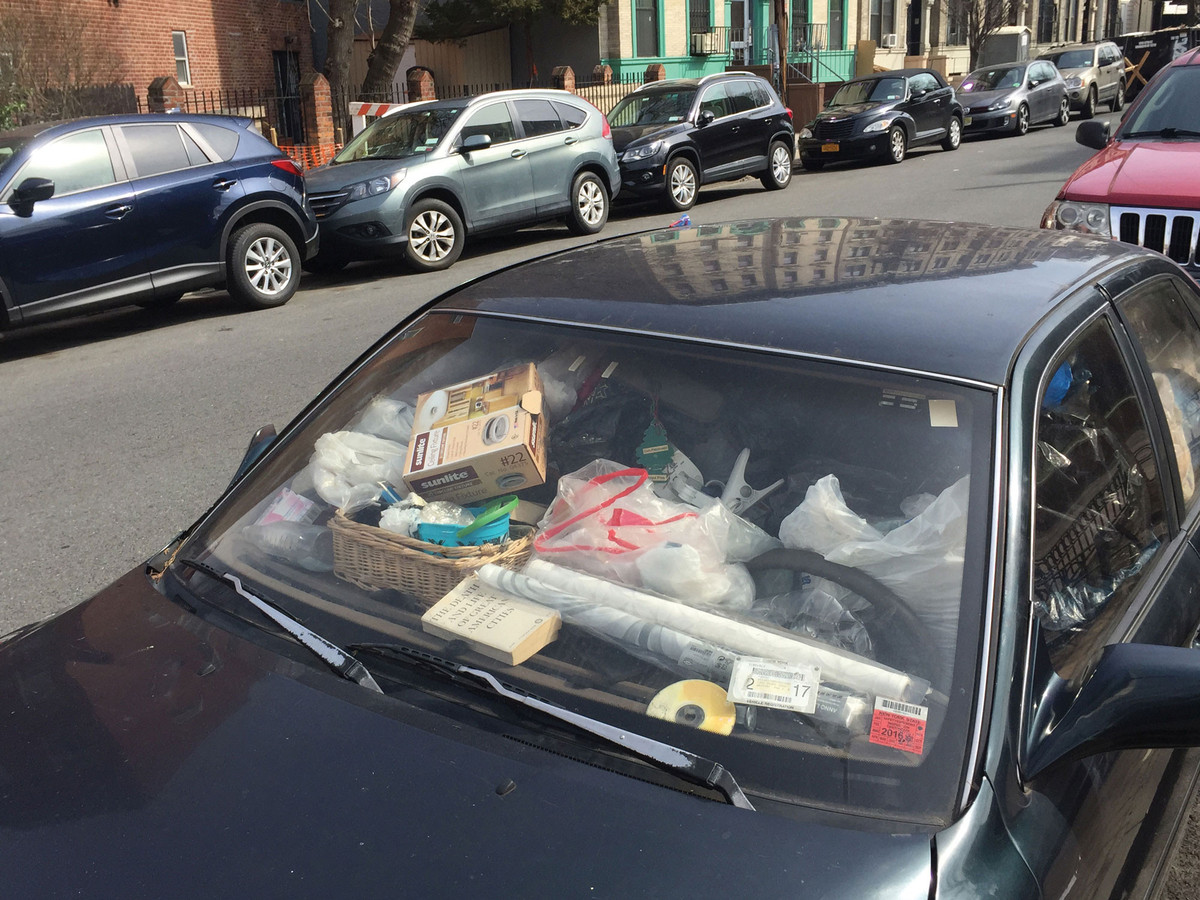Reading Jane Jacobs in the Era of #BlackLivesMatter
The #BlackLivesMatter movement put fear in the headlines. Not the fear of street crime that has garnered attention for decades in the United States, but the fear of police among black people. Although urban designers and planners have tended to give more consideration to fear of crime than fear of cops, a prominent figure in the annals of urbanism connects these two fears. Jane Jacobs, the patron saint of the quaint, well-preserved, mixed-use urban neighborhood, is also the godmother of “broken windows” or “order-maintenance” policing.
Jacobs made only occasional reference to urban crime in her landmark 1961 book The Death and Life of Great American Cities, but she was sure that strong community bonds and “eyes on the street” would preserve social order and ward off fear. This idea became talismanic among some criminologists, particularly after police brutality against black people touched off violent urban unrest in the 1960s (and crime rates seemed to rise). Jacobs’ vision indicated a way to refashion the role of police in everyday urban life, but it was tacitly premised on urban racial segregation, which the Civil Rights Acts of 1964 and 1968 would soon outlaw.
Broken Windows
In cities, “public peace,” according to Jacobs, is “not kept primarily by the police, as necessary as police are.” Instead, “it is kept primarily by an intricate, almost unconscious network of volun- tary controls and standards among the people themselves, and enforced by the people themselves.” Jacobs inspired criminologist George Kelling and political scientist James Q. Wilson, who coauthored “Broken Windows: The Police and Neighborhood Safety,” an in uential article that proposed methods to prevent major crimes by controlling disorderly behavior. As Kelling and Wilson wrote, “the police[’s] role in maintaining order is to reinforce the informal control mechanisms of the community itself.” For Jacobs, the protagonists of this informal control were “storekeepers and other small businessmen [who] are typically strong proponents of peace and order themselves; they hate broken windows and holdups.” Yet for Kelling and Wilson broken windows led to holdups.
According to Kelling and Wilson, graffiti, litter, loitering strangers, and the proverbial broken windows—the aesthetics of incivility—invited criminal activity by signaling a lack of wardship. Jacobs, however, had more faith in the value of social diversity, con dent that a precious balance could be struck between diversity and civility. Though a neighborhood represented a cohesive, bounded, and stable social unit, new faces were important to a specially urban frisson. By contrast, Kelling and Wilson believed strangers often correlated to social problems—and thus, it was the duty of police to distinguish between those who belonged in a neighborhood and those who didn’t.
Policing History
For the authors of “Broken Windows,” technologies like the 9-1-1 emergency hotline, two-way radio, and squad car had transformed patrol in regrettable ways. They made it dif cult for cops to get to know a neighborhood. Worse, unlike the strong community fabric Jacobs lauded, which might have led bystanders in emergency situations to intervene before things got out of hand, the 9-1-1 system encouraged reliance on police of cers after the fact. Instead of personal interactions in public space while walking the beat, cops typically encountered citizens in private space. Professionalized, anonymous patrol—now shielded by car windows and geared toward major crimes instead of low-level disorder—had insulated police from the community. Kelling and Wilson’s goal was to restore a bygone style of policing in which cops upheld community standards against disorder, preventing more serious crime in the process.
Yet Kelling and Wilson neglected to mention why so-called professionalization, as represented by the new policing style and technologies, ramped up in the late 1960s. It was an attempt to regain police legitimacy amid political strife. Indeed, the civil-rights struggle to vanquish racism, and the response by police to it, was the lever of momentous change Kelling and Wilson excluded from their narrative. The extensive incidence of police abuse of black, Latino, and Native American people, not new technologies, drove a wedge between cops and communities. Removing cops from foot patrol and having them respond to calls instead of watching the streets for signs of disorder was a response to the long history of police corruption and to punctual protest against brutality.
New Divisions
“Broken Windows” was premised on neat polarities: “regular” versus “stranger” and “reputable” versus “disreputable.” But it was not simply that people of color in a white neighborhood were outsiders and thus considered threatening. Instead, the homogeneity and clear boundedness of neighborhoods had become scrambled. The stability that made neighborhoods congeal for Jacobs was imperiled in theory and in law (if not also in practice) by struggles to end racial exclusion.
Kelling and Wilson evoked nostalgia for a time when cops could apply easy dichotomies, when communities were, by law and custom, more apparently homogeneous. They conjured
a past when race was super uous to social life in order to project a future where policing could be unencumbered by racism. After racial categorization was no longer legally viable, cops were compelled to use other proxies (i.e., distinctions like reputable or disreputable).
Supporters of the order-maintenance style of policing “Broken Windows” enshrined continue to insist that its dichotomous premise is not about race. In fact, the theory confronted a shifting racial landscape and sought solid ground. The divisions Kelling and Wilson advocated for threaded a legalistic needle by avoiding explicit reference to color while holding on to an older idea of what made neighborhoods safe. Today, if #BlackLivesMatter caught the country by surprise, the reason is an enthrallment with Kelling and Wilson’s type of account, purged of movements against racism as either a motor of historical change or a compass for nding justice. City residents who simply desire walking the streets without fear often lament that a return to the type of communal fabric Jacobs endorsed seems dif cult. But without paying attention to the movements that have exposed the racial order hidden beneath the fabric, understanding why it disintegrated will be impossible.
Stuart Schrader is a Postdoctoral Fellow in Global American Studies at the Charles Warren Center for Studies in American History at Harvard University. He is working on a book currently titled American Streets, Foreign Territory: Counterinsurgency, Police, and the War on Crime.


